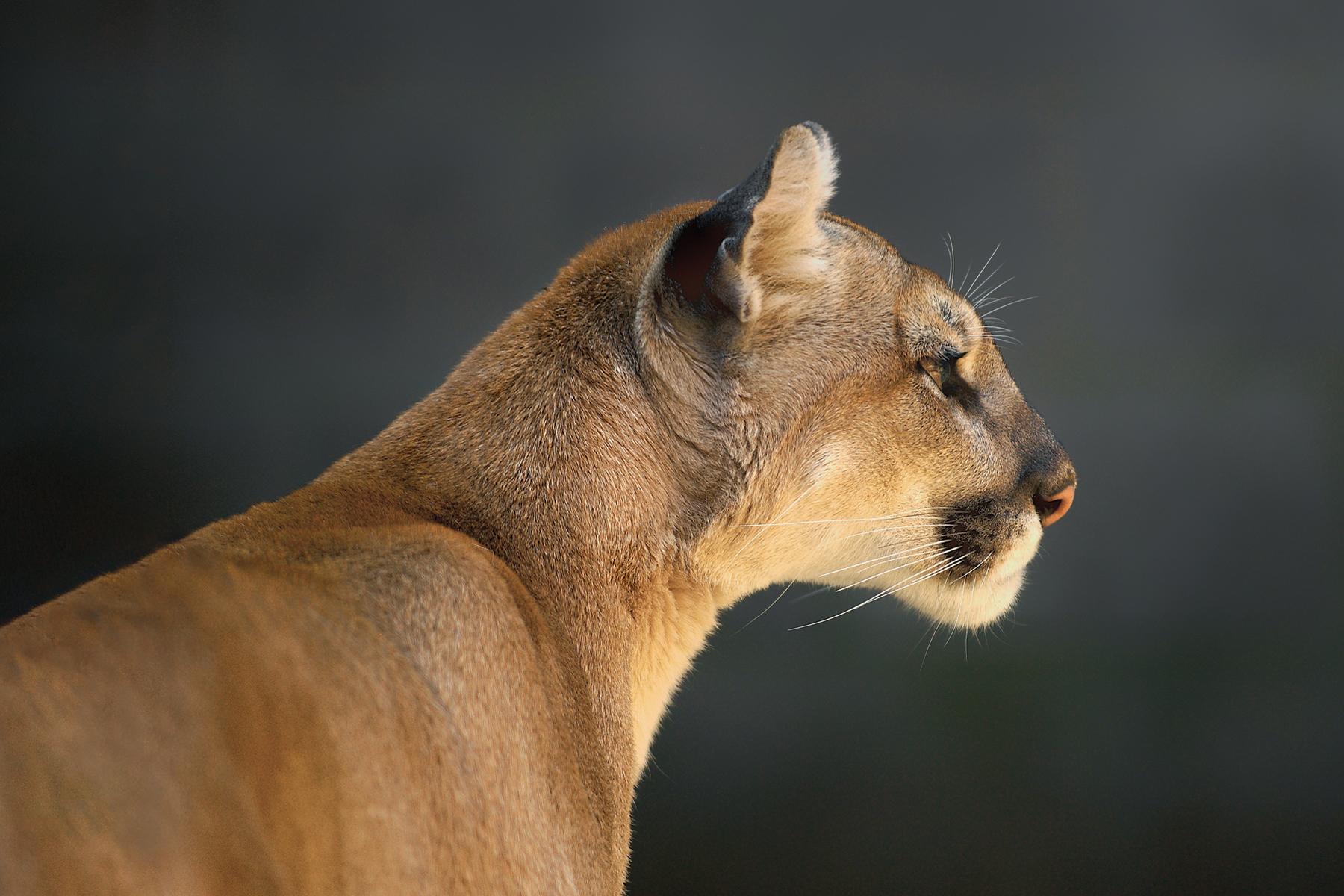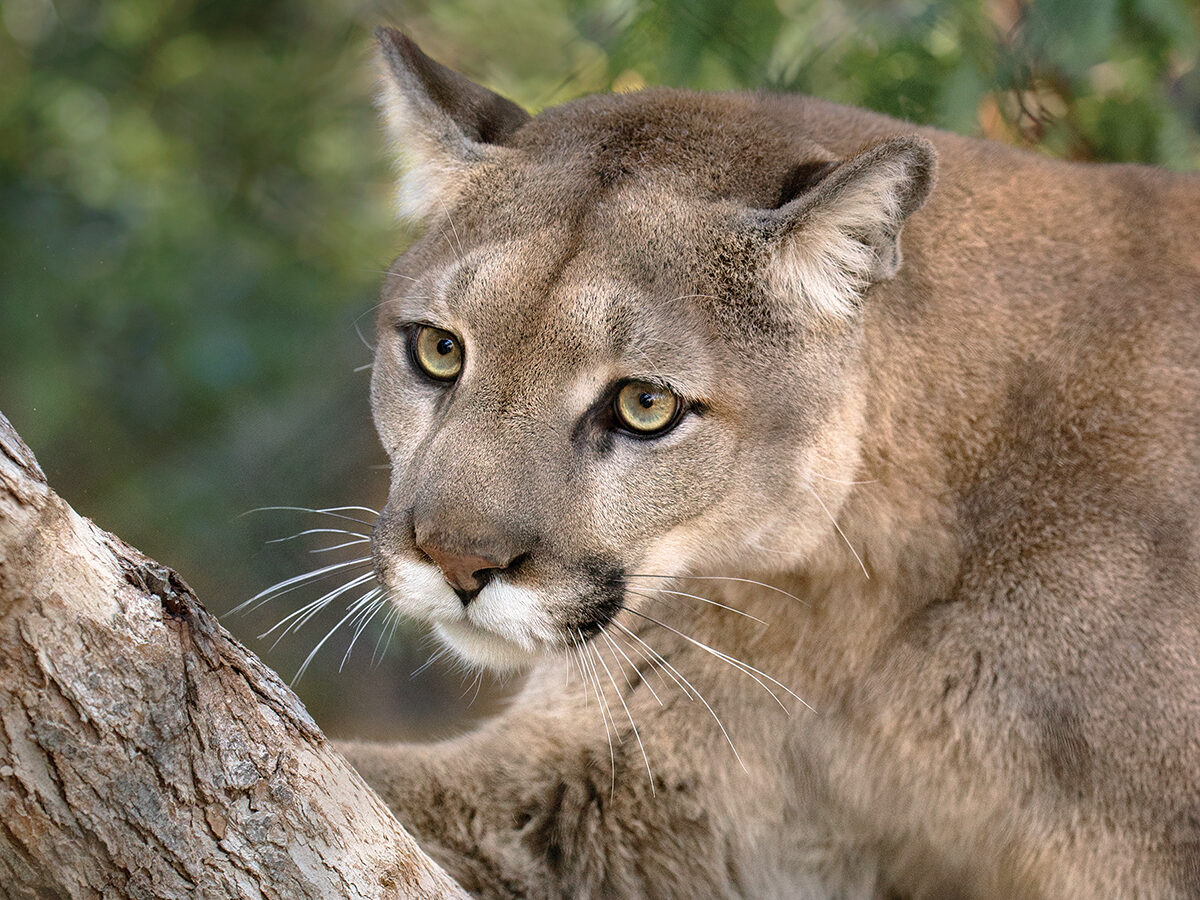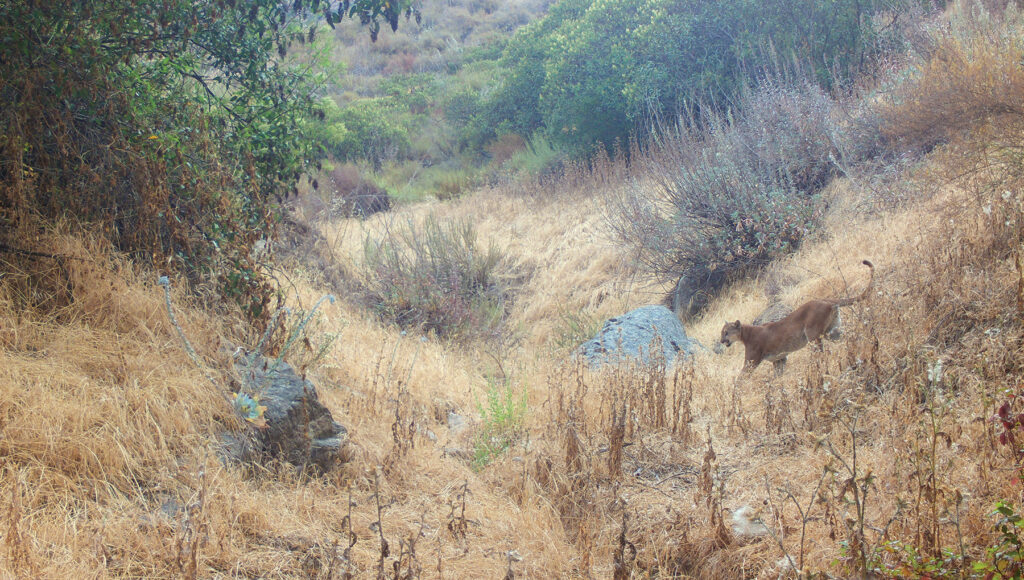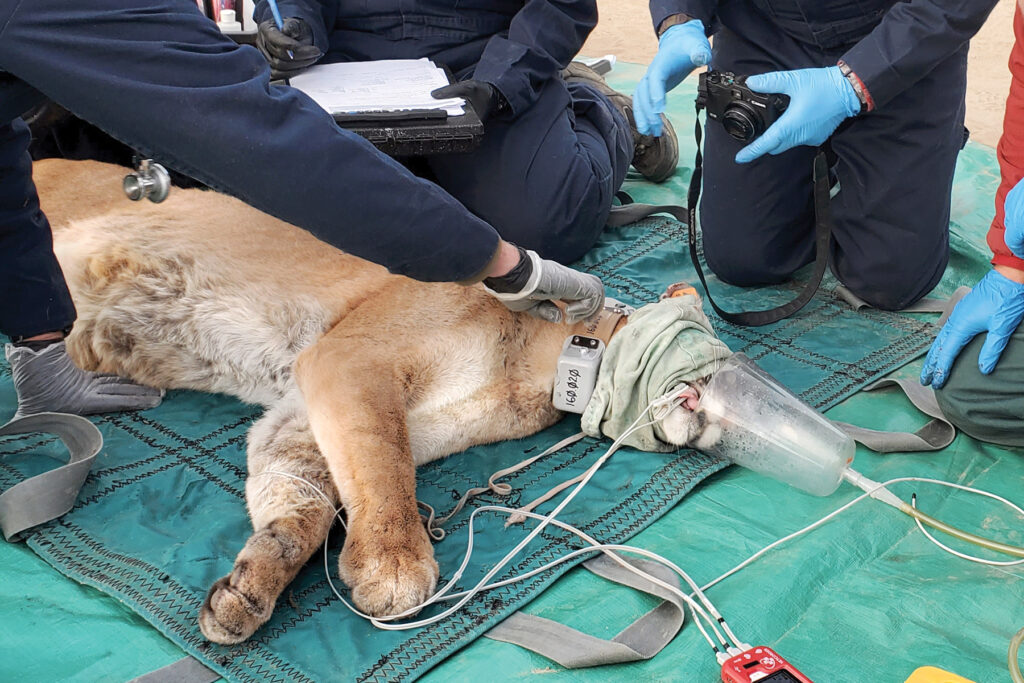
The Quest to Save California's Mountain Lions
Can an animal be both endangered and common at the same time? At first, the two terms might seem contradictory. In the conservation community, “threatened,” “endangered,” and “rare” are adjectives we apply to the species most at risk of disappearing forever from Earth. On the other hand, we might call the plants and animals we see or interact with on a regular basis “common,” so abundant and well adapted that even in our modern, urbanized world, we still bump into them regularly. How can it be that a species is both common and at risk of disappearing? The surprising answer consists of equal parts animal biology and human psychology. And no species more perfectly embodies the contradictions—common and rare, everywhere but nowhere, widespread but at perilous risk—than Southern California’s mountain lion Puma concolor.
The Paradox of the Puma
Mountain lions—also known as cougars, pumas, and panthers—are adaptable, and make their home across a huge range of habitats, from Canada to the tip of South America. More often than we are aware, they are peacefully coexisting and sharing their habitat with us. Just the fact that they are still here in the Golden State is a remarkable testament to their intelligence, resourcefulness, and ability to adapt to a changing world. Targeted as threats to people and domestic livestock, mountain lions (along with their fellow apex predators, wolves and grizzly bears) were hunted by Spanish, Mexican, and US settlers throughout the 18th and 19th centuries, with increasing focus and technological sophistication. Between 1906 and 1963, California issued a statewide bounty that resulted in over 12,000 mountain lions killed. By the early 20th century, gray wolves and the mighty grizzly bear were gone from California’s landscape, but mountain lions persisted.

Legal protection began in 1972, and in 1990, the passing of Proposition 117 gave mountain lions special protection under California law—a rarity among states with the species. Since these protections were put in place, mountain lion numbers have slowly increased across the state. However, despite legal protection, life in the shadow of human progress hasn’t been easy. Proposition 117 banned the sport hunting of mountain lions, but allowed for exceptions. For example, mountain lions can be killed if they pose a threat to public safety. Freeways form impenetrable barriers to mountain lions, accounting for many mortalities.
Mounting Concerns—and Cooperation
Mountain lions face additional challenges, too. The same freeways that connect our cities create islands of habitat for mountain lions and other species, preventing them from dispersing to find new territories. The inability of mountain lions to move between these isolated islands has multiple consequences: they are cut off from the gene flow that maintains vital genetic diversity; diseases can spread more rapidly; and there is increased competition between individuals for limited resources. Moreover, almost all mountain lions in California tested by researchers are positive for rodenticides, some of which are illegal in the state. One study of Southern California mountain lions found that just over half of all individuals will survive to the next year.
More often than we are aware, mountain lions are peacefully coexisting and sharing their shrinking habitat with us. As development encroaches on wilderness areas, frequent contact with people is inevitable, maintaining the illusion that mountain lions are common or even “overpopulated,” when in fact, local populations are closer than ever to extinction.

Our partners at the University of California, Davis California Mountain Lion Project (CMLP) are addressing modern threats to California’s mountain lions, and we are collaborating with them on several key projects. To address loss of mountain lions through depredation permits, we are working together to study and test deterrents. We are using trail cameras and GPS collars to track mountain lion movement through locations where we experimentally set small noise- and light-making devices. Some of these devices play recordings that are neutral to domestic animals and people, but frightening to mountain lions. Our study will identify tools that landowners can use to teach mountain lions to keep a healthy distance—protecting the lives of livestock and pets.
Mountain Lion Land Management
In Orange County’s Santa Ana Mountains, mountain lions are surrounded on all sides by development and freeways. Here, CMLP is working to develop monitoring techniques that will allow researchers to detect declines in population size or health, generating accurate models of population size by combining data from remote trail cameras, GPS collars, and scat. They are collecting genetic information and measuring physical characteristics indicative of inbreeding, such as kinked tails and abnormal sperm, which were also seen in the critically endangered Florida panther (a different localized population of the same species). In collaboration with San Diego Zoo Wildlife Alliance, CMLP is also studying how mountain lion habitat use, especially in urban areas, impacts their exposure to toxins and disease, especially those that are shared with people and domestic animals.

CMLP and collaborators have identified six populations of mountain lions in Southern and Central California that are at risk of population decline, even in some cases to the point of local extinction, due to high levels of mortality, small population sizes, loss of habitat, and loss of genetic diversity. These threats are of enough concern that these six populations are currently being considered for listing under the California Endangered Species Act, which would afford them additional protections. Two of these populations—the Santa Ana Mountains and the Eastern Peninsular Range—are right in the backyard of the San Diego Zoo Safari Park. We're proud to be working with CMLP to advance the science needed to conserve these icons of the Southwest.
"But in the end, it's only a passing thing, this shadow. Even darkness must pass.
A new day will come. And when the sun shines it will shine out the clearer."
-J. R. R. Tolkien, The Lord of the Rings
Discover how you’re making a difference for local wildlife and ecosystems through our Southwest Conservation Hub.
(Top image photo credit: gkuchera/iStock/Getty Images)




